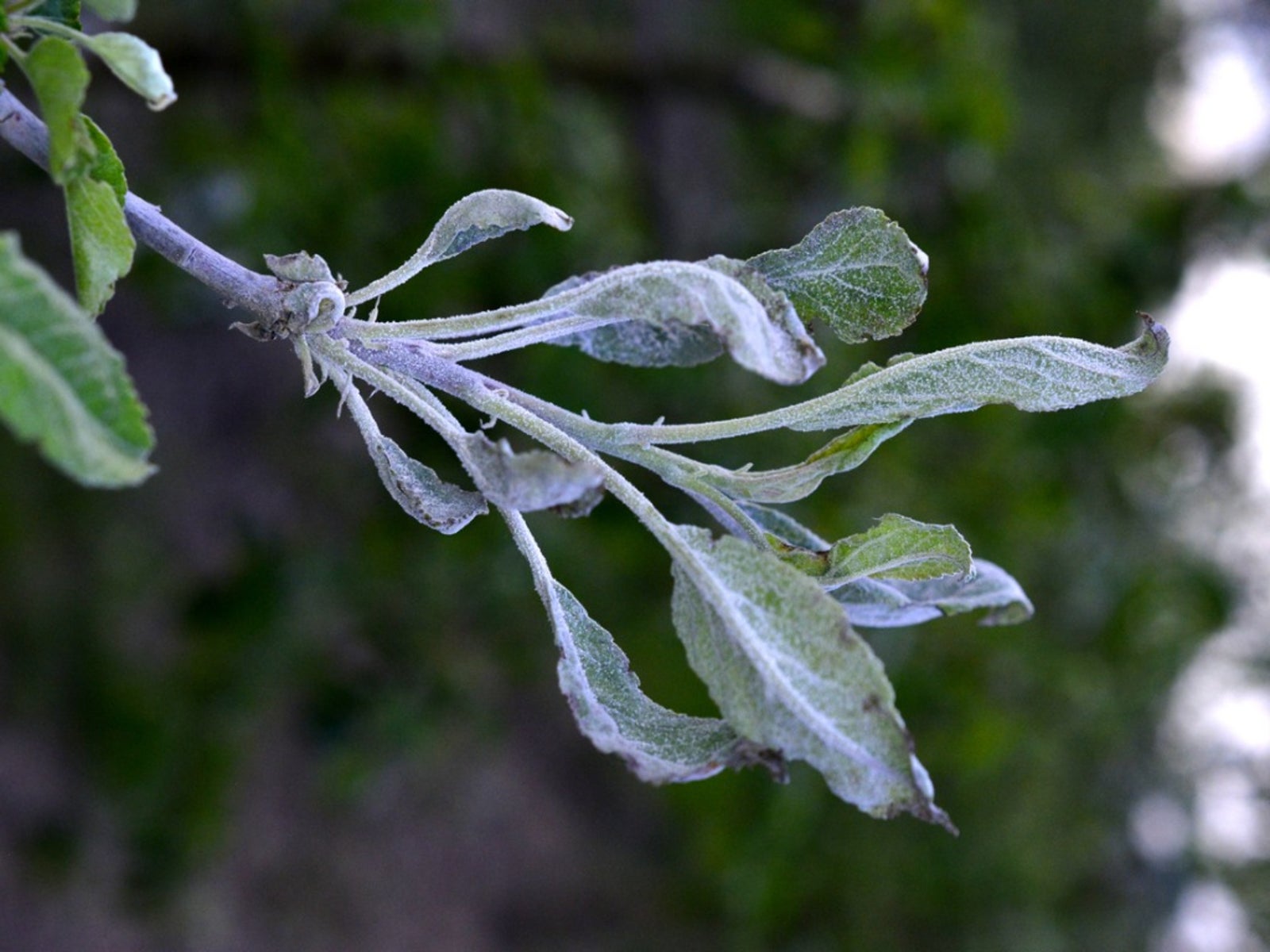Powdery Mildew Fungus On Trees – How To Treat Powdery Mildew On Trees


Powdery mildew is an easy disease to recognize. On trees with powdery mildew, you’ll see a white or gray powdery growth on the leaves. It’s usually not lethal in trees, but it can disfigure fruit trees and limit their productivity. You can prevent powdery mildew fungus on trees by using proper cultural practices but treating powdery mildew on trees is also possible. Read on if you want to learn how to treat trees with powdery mildew.
Powdery Mildew Fungus on Trees
Powdery mildew attacks many plants, and trees with powdery mildew are no exception. Trees can be infected by different fungi. Most powdery mildew fungus on trees release overwintering spores when conditions are moist. Moist conditions are also necessary for the spores to germinate and infect a tree. Once a tree is infected, however, the fungus grows well without humidity.
Preventing and Treating Powdery Mildew on Trees
Trees with powdery mildew are not usually damaged seriously by the fungus, but fruit trees are the exception. The disease attacks new buds, shoots and flowers on fruit trees, distorting new growth. On apple trees, as well as apricot, nectarine, and peach trees, you’ll see web-like scars on the immature fruit of infected trees. A rough corky spot develops at the point of infection. If you are wondering how to treat powdery mildew on trees, you’ll do best to give the trees excellent care to prevent the infection in the first place. Prevent powdery mildew fungus on trees by planting them in sunny sites, trimming inner branches to increase air circulation, and limiting fertilizer. Treating powdery mildew on trees begins by vigilance. Keep your eye on your fruit trees as the new shoots develop in the springtime, looking for symptoms of powdery mildew. If you see deformed, puckered leaves, it’s time to get out the pruners. Disinfect the cutting edges, then prune out and discard the diseased portions of the plant immediately. At the same time, apply fungicides to protect the remaining leaves on the fruit tree. You’ll need to repeat the fungicide applications according to label instructions to protect the trees over the entire season.
Gardening tips, videos, info and more delivered right to your inbox!
Sign up for the Gardening Know How newsletter today and receive a free copy of our e-book "How to Grow Delicious Tomatoes".

Teo Spengler is a master gardener and a docent at the San Francisco Botanical Garden, where she hosts public tours. She has studied horticulture and written about nature, trees, plants, and gardening for more than two decades. Her extended family includes some 30 houseplants and hundreds of outdoor plants, including 250 trees, which are her main passion. Spengler currently splits her life between San Francisco and the French Basque Country, though she was raised in Alaska, giving her experience of gardening in a range of climates.
-
 Get Ready For A Summer Of Hummers! Grow These Full Sun Hummingbird Plants and Flowers
Get Ready For A Summer Of Hummers! Grow These Full Sun Hummingbird Plants and FlowersIf you’re lucky enough to enjoy a sunny backyard, make sure you are maxing out on your pollinator opportunities and grow these full sun hummingbird plants and flowers
By Tonya Barnett
-
 12 Lush Alternatives To A Lawn For Sustainable Spaces
12 Lush Alternatives To A Lawn For Sustainable SpacesAlternatives to a lawn are beautiful and also beneficial to your local ecosystem and its pollinators. Explore our top picks for plants to replace grass.
By Tonya Barnett
-
 Best Trees For Carbon Sequestration And Climate Change
Best Trees For Carbon Sequestration And Climate ChangeLet’s keep planting trees. They are our best bet for capturing carbon and may help with our global warming issues.
By Teo Spengler
-
 7 Invasive Trees You Should Never Plant In Your Yard Or Garden
7 Invasive Trees You Should Never Plant In Your Yard Or GardenWhat are some invasive trees you should never plant in your yard? Click here to find out.
By Teo Spengler
-
 How Close Can You Plant A Tree To A Stump?
How Close Can You Plant A Tree To A Stump?Looking to plant new trees near old stumps or where stumps have been removed? Click here to learn how.
By Teo Spengler
-
 Messiest Trees That Drop Debris Everywhere
Messiest Trees That Drop Debris EverywhereWant to know which trees will create the biggest messes in your home landscape? Click here to find out.
By Amy Grant
-
 How To Get Rid Of Tree Sprouts In The Yard From Nearby Trees
How To Get Rid Of Tree Sprouts In The Yard From Nearby TreesLearn the simple way to keep pesky tree seedlings in your lawn from becoming saplings.
By Teo Spengler
-
 How To Tell How Old A Tree Is
How To Tell How Old A Tree IsEver wondered how to calculate the age of a tree? Click here to learn all about it.
By Teo Spengler
-
 When To Remove Tree Stakes From Saplings
When To Remove Tree Stakes From SaplingsA newly planted tree may grow strong when it’s staked, but don’t forget to remove the stakes when it’s stable.
By Teo Spengler
-
 Inosculation And Trees Growing Together
Inosculation And Trees Growing TogetherIf you ever see two trees that have bonded and grown together, read here to learn why and how it happens.
By Teo Spengler